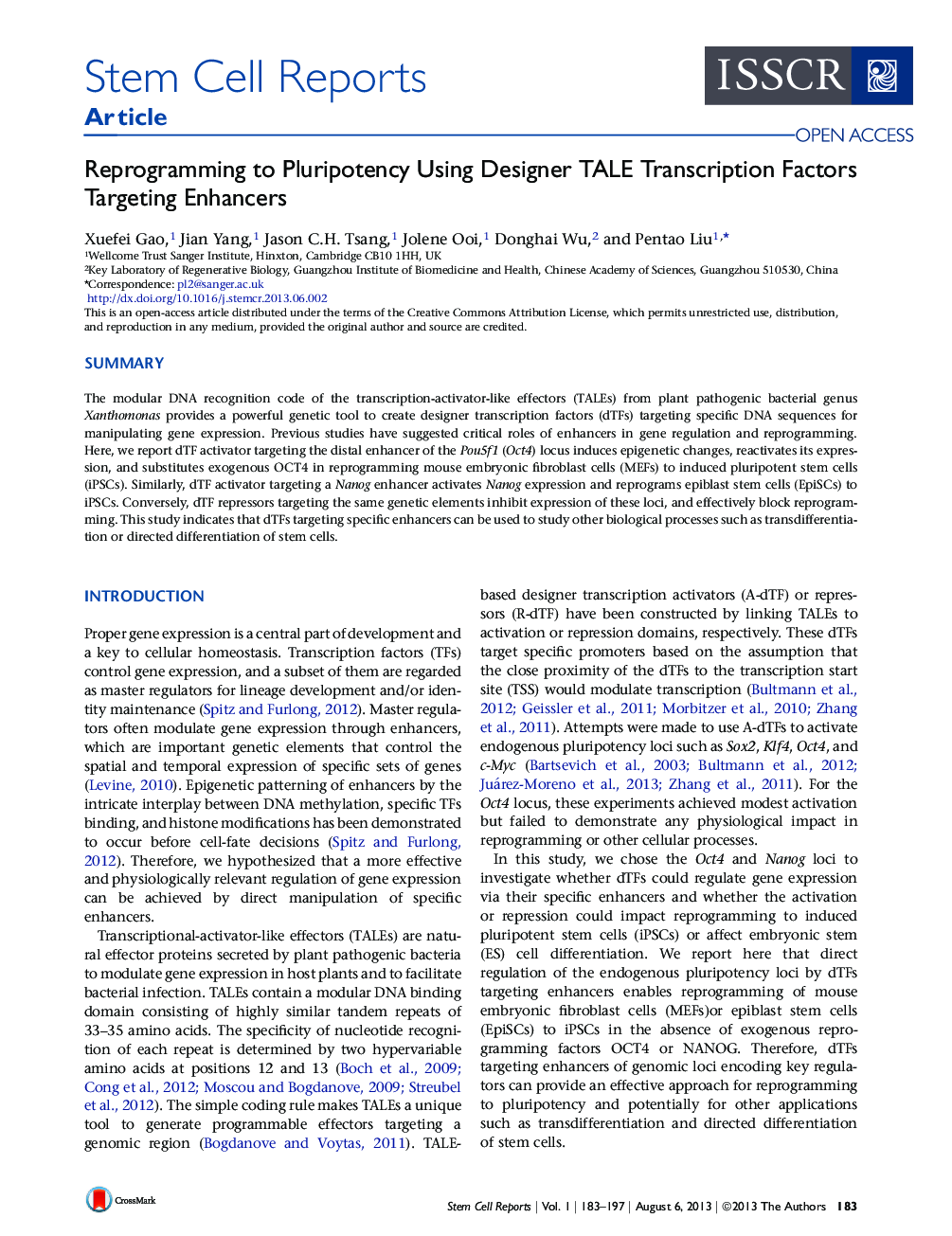| Article ID | Journal | Published Year | Pages | File Type |
|---|---|---|---|---|
| 2093530 | Stem Cell Reports | 2013 | 15 Pages |
•The dTF for the Oct4 distal enhancer replaces OCT4 in reprogramming MEFs to iPSCs•The repressor dTF induces ESC differentiation and blocks reprogramming•The dTF for the Nanog reprograms EpiSCs to iPSCs, whereas the repressor blocks it•Targeting enhancers by dTFs can be an effective way to control gene expression
SummaryThe modular DNA recognition code of the transcription-activator-like effectors (TALEs) from plant pathogenic bacterial genus Xanthomonas provides a powerful genetic tool to create designer transcription factors (dTFs) targeting specific DNA sequences for manipulating gene expression. Previous studies have suggested critical roles of enhancers in gene regulation and reprogramming. Here, we report dTF activator targeting the distal enhancer of the Pou5f1 (Oct4) locus induces epigenetic changes, reactivates its expression, and substitutes exogenous OCT4 in reprogramming mouse embryonic fibroblast cells (MEFs) to induced pluripotent stem cells (iPSCs). Similarly, dTF activator targeting a Nanog enhancer activates Nanog expression and reprograms epiblast stem cells (EpiSCs) to iPSCs. Conversely, dTF repressors targeting the same genetic elements inhibit expression of these loci, and effectively block reprogramming. This study indicates that dTFs targeting specific enhancers can be used to study other biological processes such as transdifferentiation or directed differentiation of stem cells.
Graphical AbstractFigure optionsDownload full-size imageDownload as PowerPoint slide
